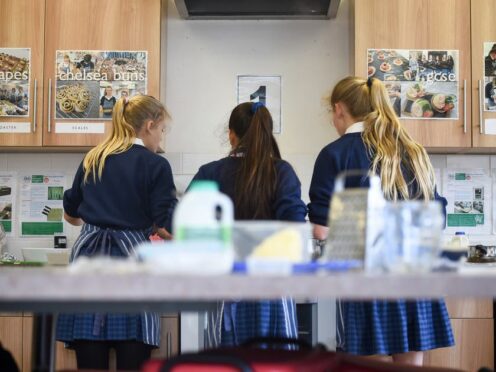A primary school in one of Scotland’s most deprived areas has earned a top spot in the Sunday Times’ primary school league table.
Thorntree Primary in Shettleston, Glasgow, performed flawlessly in reading, writing, numeracy, listening and talking among P7 pupils despite most living in deprivation.
St Catherine’s Primary, a Roman Catholic school in Paisley, had another outstanding year after being named Scotland’s most successful school in the 2023 table.
Julie Calman, acting headteacher at Thorntree, said: “Our schools across the city and their dedicated staff continually strive to provide high quality learning and teaching and have high expectations for all our pupils.
“We were the first primary in Glasgow to be awarded the nurturing school award, to recognise an inclusive and caring approach towards our families.
“We feel that a nurturing approach makes for high-quality learning and teaching, that it creates a nice experience, and children just want to come to school.”
The Sunday Times league table ranks all of Scotland’s publicly funded primary schools using the Scottish Government’s Achievement in Curriculum for Excellence Levels (ACEL) data.
The ACEL data presents the percentage of pupils meeting the required level in reading, writing and numeracy, as well as a combined score for listening and talking.
The Sunday Times aggregates the data into a league table, pushing schools with a higher proportion of deprived pupils further up the table to acknowledge their success in overcoming the widely acknowledged link between poverty and poor academic attainment.
Data from P7 is given the greatest prominence, as this is the final stage before secondary school and reflects the influence of teachers throughout all stages of primary school.
Pupils are placed on a spectrum from very deprived to very affluent in the Scottish Index of Multiple Deprivation, which ranks the neighbourhoods where they live by income, jobs, health, education, housing, crime and access to local amenities.
A record 84 schools from nearly 1,200 that submitted data scored top marks across all indicators in the school year ending summer 2023. This compares to just 50 when data was first collected in 2017, 69 in 2018, 64 in 2019, 51 in 2021 and 63 in 2022.
Across local authorities, East Renfrewshire and East Dunbartonshire were the best performing councils for primary school attainment.
The councils have an exemplary record in education for children from P1 through to S6, invariably topping the table for the best performance in Curriculum for Excellence at primary and having the biggest proportion of pupils with five highers at secondary school.
In East Renfrewshire, around 90% of pupils are up to standard in reading, writing, numeracy, as well as listening and talking.
House prices near the best schools in these councils come at a premium, and most schools have a very low percentage of deprived pupils.
Schools in the Western Isles and Orkney Isles also perform well, with a high proportion of competent pupils, although their smaller pupil populations can artificially inflate percentages.
The Lothians offer a tale of two councils. West Lothian is near the top of the table with percentages in the mid-80s while East Lothian is second bottom with only around 70% of pupils up to standard in most disciplines.
Shetland Islands is bottom of the table, with around 70% of pupils up to standard.
The Scottish Government hailed the latest ACEL data as evidence of improvements in national education but some have cast doubt on statistics compiled using “teacher judgment”.
Thorntree Primary School has overcome the traditional educational barriers of low income to produce top marks despite nearly 80% of pupils being deemed “very deprived” by the Scottish Government.
The school has made great strides in the last six years, with attainment improving year on year.
In 2016/17 less than 70% of pupils were proficient in numeracy, while attainment in reading and writing was below 90%.
A Sunday Times Scotland spokesperson said: “We are always careful to clarify that The Times Scotland Primary School League Table is not ‘Scotland’s schools ranked from best to worst’.
“It presents government data from primary seven, arguably the most important year for pupils preparing for high school, for parents to analyse standards across the 1,250 schools that published reportable results.
“Our aim is to present data in an easily accessible format that parents can understand”.
